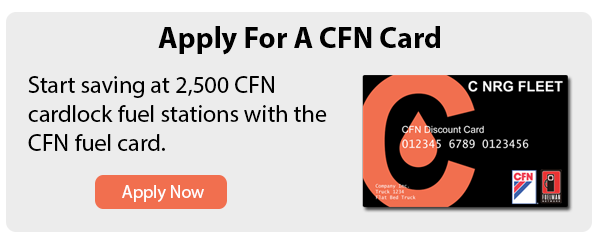If you manage your company’s vehicles you’ve probably heard of the term cardlock fueling mentioned before, but what is it? In short, cardlock fueling is a fleet fuel management method that uses a fleet card to track and control fuel purchases at cardlock fueling stations. You are probably thinking, what’s the difference between a regular retail fuel card program (WEX, Comdata, Voyager) and a cardlock fueling program?
1. Cardlock Fueling Stations Are Different Than Regular Gas Stations
Cardlock fueling stations (pictured above) are unmanned fuel stations with 18 wheel access that are specifically made for businesses. Unlike retail stations, most cardlocks don’t have c-stores and aren’t open to the general public. Usually cardlock stations work best for companies that have local and regional routes where drivers won’t need access to showers or a lot to park in overnight.
- 18-wheel access
- Diesel
- DEF (some locations)
- Dyed diesel (some locations)
- High flow pumps
- No c-store
2. Cardlock Fuel Cards Have Product Controls

Cardlock fuel cards can be set to purchase diesel only, or gas only. If a diesel card tries to activate a gas pump it simply won’t. On the other hand retail fuel cards have no product controls, but you can receive exemption reports whenever a diesel driver purchases gas. Both have control, but cardlock fuel cards catch bad transactions before the transaction occurs while retail cards simply report bad transactions.
3. Cardlock Fuel Cards Are Based Off Gallons Not Dollars

Retail fuel cards use dollar transactions limits while cardlock fuel cards have gallon transaction limits. The major difference is that you have to keep changing the dollar limit on retail fuel cards as the price changes.
4. Cardlock Fuel Card Pricing Vs. Retail Fuel Card Pricing
Retail fuel card pricing is usually the price you see at the pump plus fees or minus discounts. Cardlock fuel pricing is usually based off of the Oil Price Information Services (OPIS) plus the margin the fleet card company makes.
The main difference is that retail locations pricing can fluctuate dramatically from station to station where two cardlock locations in a given area will be roughly the same price. I.E. a Shell could be $3.00 for diesel while an Arco right across the street could be $2.70.
Check out CFN Cardlock Prices With the CFN Fuel Price Finder
What Are The Best Cardlock Fuel Cards?
There are two cardlock fuel cards; the CFN fuel card and the Pacific Pride fuel card. Both cards offer similar controls, reporting features, and purchase alerts. The only major difference is that the Pacific Pride card is accepted at 1,300 cardlock fuel stations and the CFN card works at 2,300 cardlock locations.
To get a complete comparison of these cards, check out this article CFN vs. Pacifc Pride.

